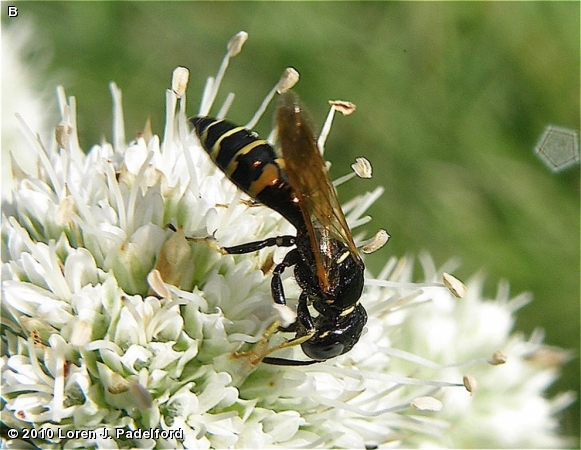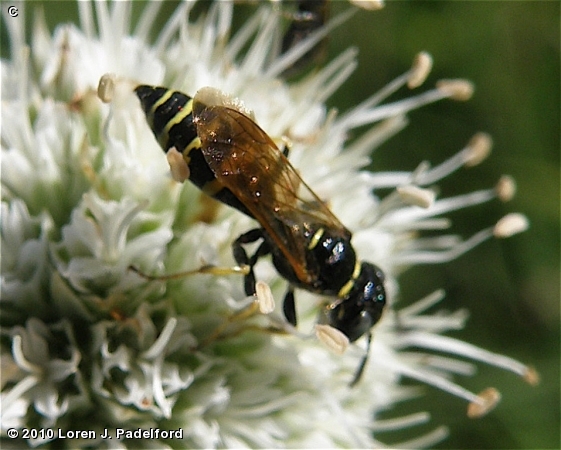
A small wasp, approximately 1/2 inch or 13 mm long. It is black with yellow bands on the abdomen. Legs are black (femurs) and yellow (tibia and tarsi). Wings are smoky brown. Identifying marks are the crescent shaped yellow spots on the second abdominal segment (tergum 2) (photo A). Beewolves are named because they prey on bees, particularly Halictid bees (sweat bees). They hunt for their prey around flowers, bee nests and apiaries. Beewolves provision their nest with captured bees on which they lay an egg. Upon hatching the larvae feed on the bee provided by the mother.
This wasp was photographed on the prairie at Camp Brewster on 17 July 2010 nectaring on Rattlesnake Master. It is probably uncommon in this area. It ranges from the central plains to northeastern US and Canada. There are 31 species of Philanthus in North America.
Females cultivate bacteria in the base of their antennae to apply to brood cells. This bacteria keeps out bacteria potentially harmful to the wasp larva. Nests are excavated in suitable soil (not too sandy or too much clay) at the end of long burrows.
The content of NatureSearch is provided by dedicated volunteer Naturalists of Fontenelle Forest who strive to provide the most accurate information available. Contributors of the images retain their copyrights. The point of contact for this page is: Loren Padelford.


